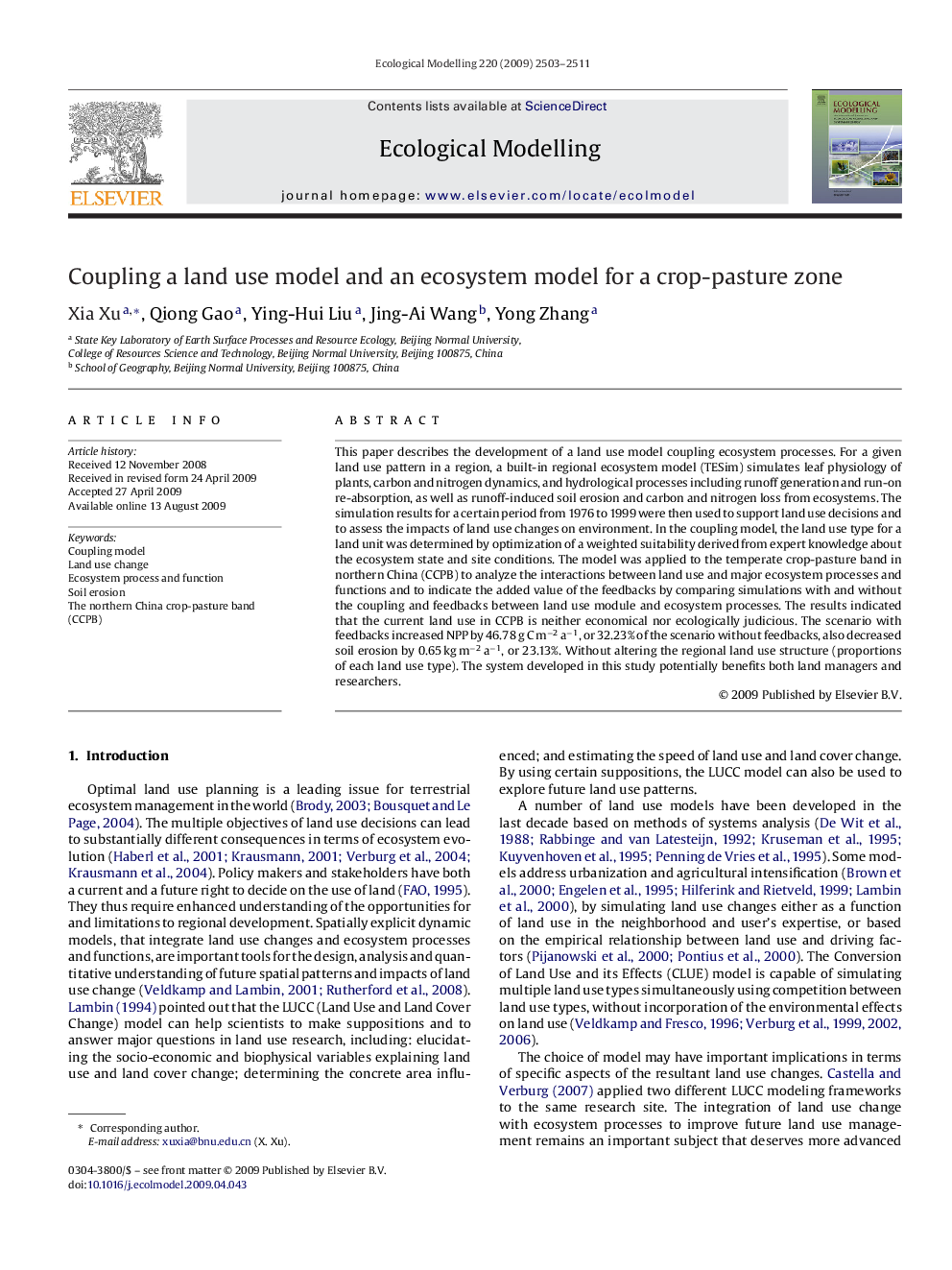| Article ID | Journal | Published Year | Pages | File Type |
|---|---|---|---|---|
| 4377667 | Ecological Modelling | 2009 | 9 Pages |
Abstract
This paper describes the development of a land use model coupling ecosystem processes. For a given land use pattern in a region, a built-in regional ecosystem model (TESim) simulates leaf physiology of plants, carbon and nitrogen dynamics, and hydrological processes including runoff generation and run-on re-absorption, as well as runoff-induced soil erosion and carbon and nitrogen loss from ecosystems. The simulation results for a certain period from 1976 to 1999 were then used to support land use decisions and to assess the impacts of land use changes on environment. In the coupling model, the land use type for a land unit was determined by optimization of a weighted suitability derived from expert knowledge about the ecosystem state and site conditions. The model was applied to the temperate crop-pasture band in northern China (CCPB) to analyze the interactions between land use and major ecosystem processes and functions and to indicate the added value of the feedbacks by comparing simulations with and without the coupling and feedbacks between land use module and ecosystem processes. The results indicated that the current land use in CCPB is neither economical nor ecologically judicious. The scenario with feedbacks increased NPP by 46.78 g C mâ2 aâ1, or 32.23% of the scenario without feedbacks, also decreased soil erosion by 0.65 kg mâ2 aâ1, or 23.13%. Without altering the regional land use structure (proportions of each land use type). The system developed in this study potentially benefits both land managers and researchers.
Related Topics
Life Sciences
Agricultural and Biological Sciences
Ecology, Evolution, Behavior and Systematics
Authors
Xia Xu, Qiong Gao, Ying-Hui Liu, Jing-Ai Wang, Yong Zhang,
